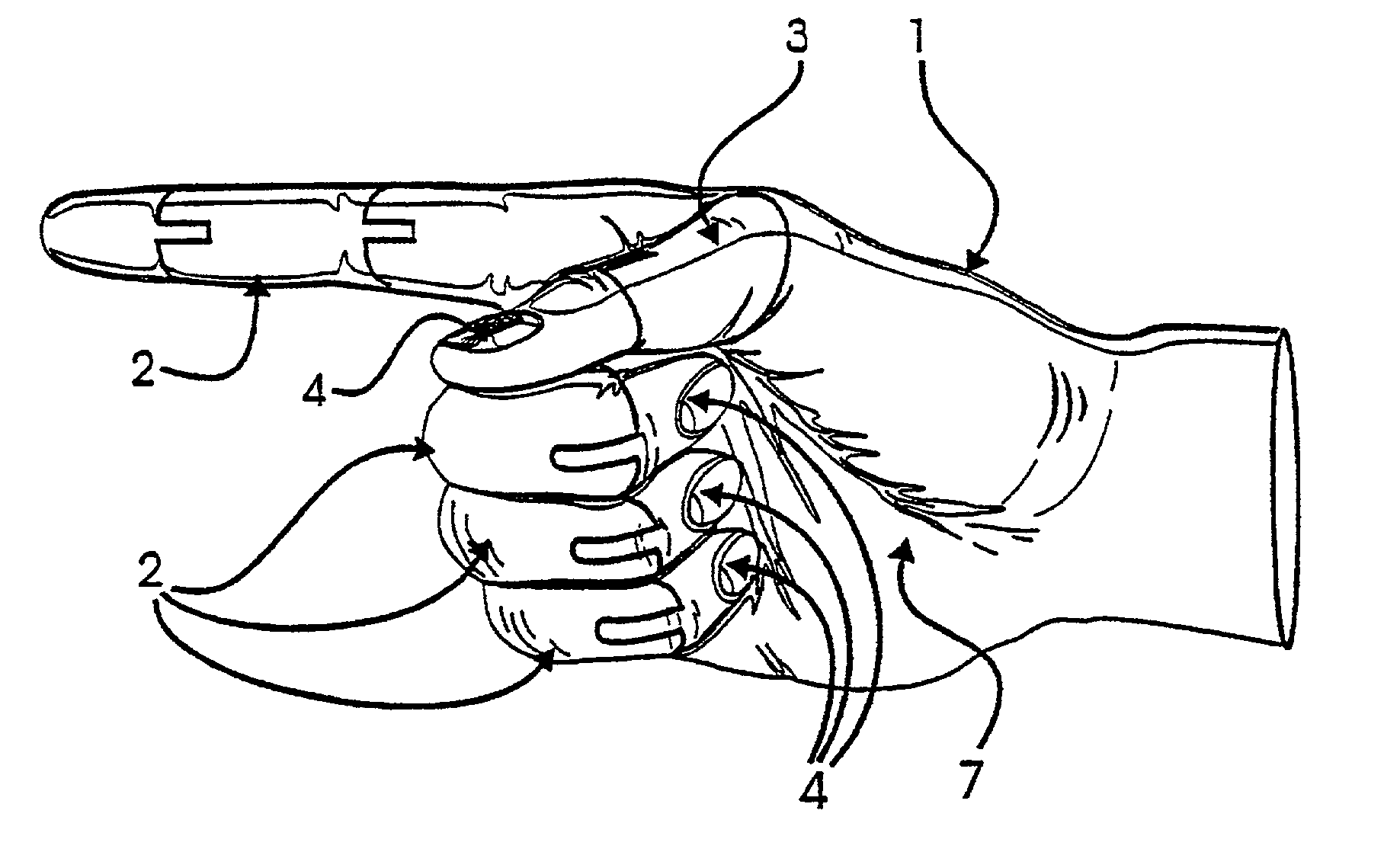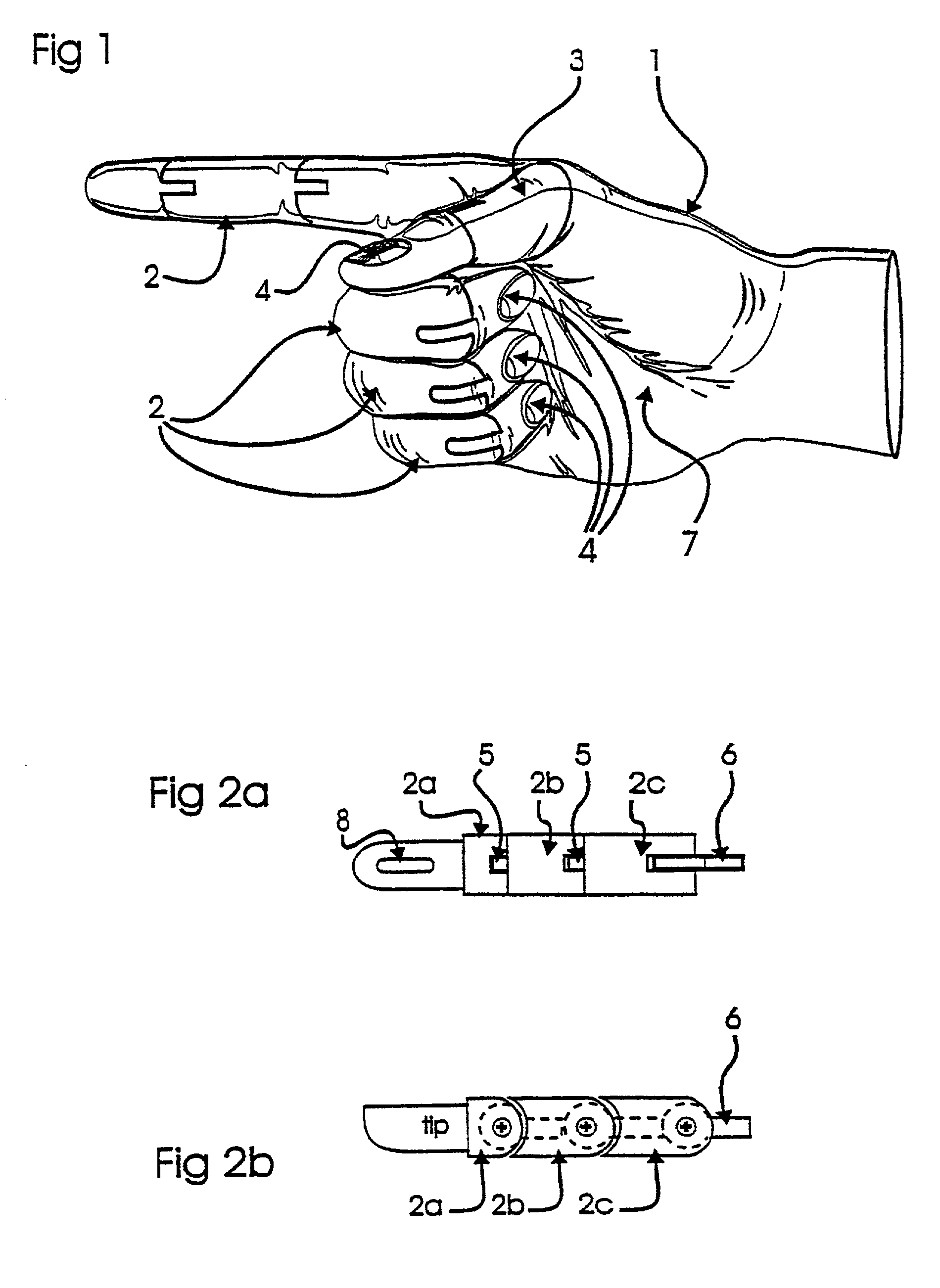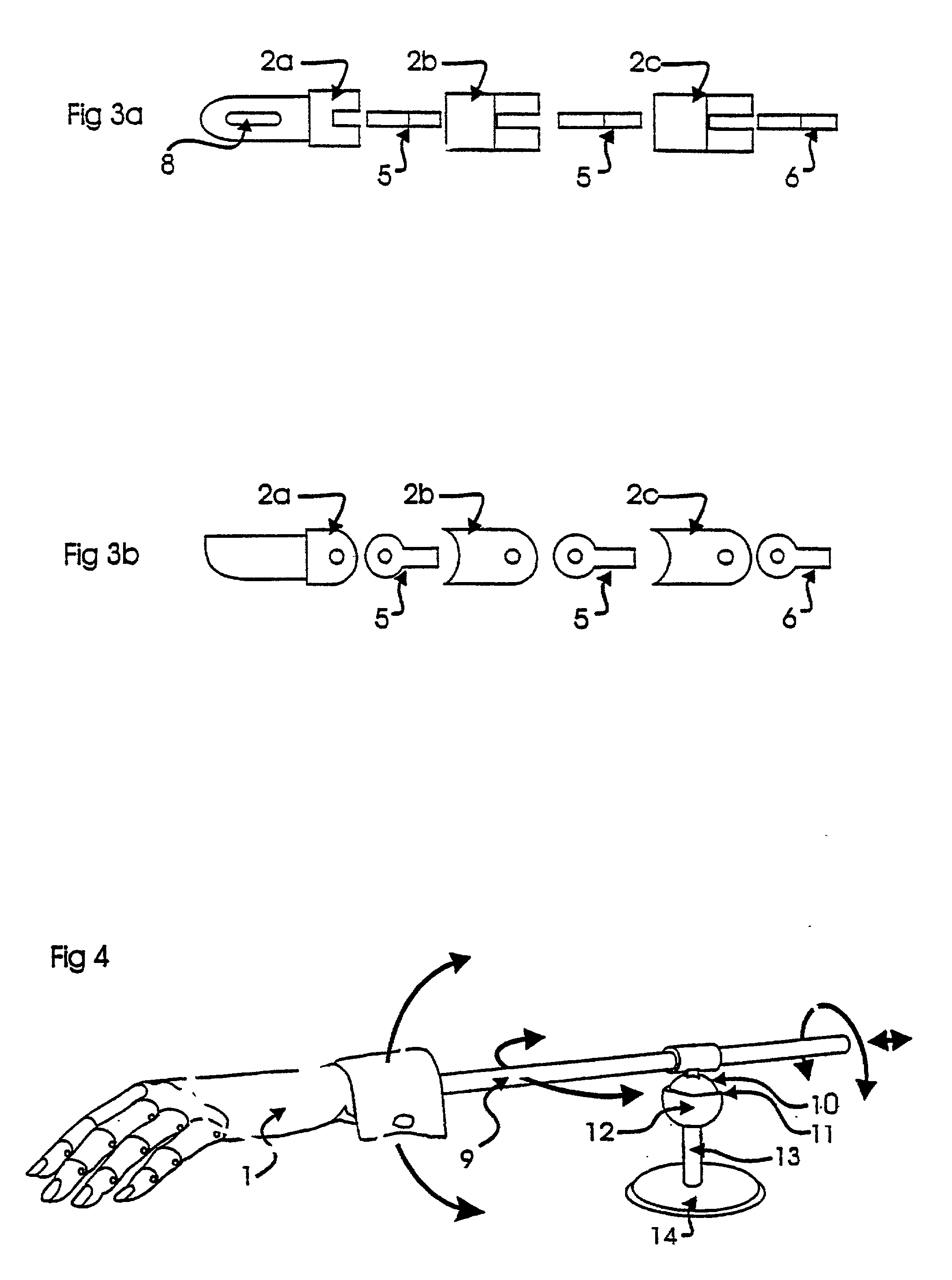Training aid for application of false nails
a training aid and false nail technology, applied in the field of false nail training aids, can solve the problems of customer pain, many weeks of training before an operator becomes suitably proficient, and the use of mannequin hands has not hereinbefore proved useful in assisting the training of operators, and achieves realistic training without risk of damage to clients' hands.
- Summary
- Abstract
- Description
- Claims
- Application Information
AI Technical Summary
Benefits of technology
Problems solved by technology
Method used
Image
Examples
Embodiment Construction
[0032] Referring first to FIG. 1, the hand 1 is designed to simulate as closely as possible the movement, flexibility and feel of a natural hand, and is provided with jointed fingers 2 and thumb 3 arranged to have the same range and directions of movement of a natural hand. Each digit 2 and 3 has a tip portion in which is removably mounted a nail 4, as hereinafter described. FIGS. 2 and 3 illustrate the construction of the finger joints. It will be seen that each finger section 2a, 2b, 2c is linked to the next by means of a simple rotary joint incorporating a jointing ligament 5 formed of a relatively stiff material permitting rotation substantially only in a single plane. A third ligament 6 (the second in the case of the thumb) joins the finger to the palm 7 (see FIG. 1), and is formed of a more flexible material, such as polyethylene, permitting a degree of rotation of the finger around the longitudinal axis thereof. A total rotation of about 30 degrees is sufficient to simulate t...
PUM
 Login to View More
Login to View More Abstract
Description
Claims
Application Information
 Login to View More
Login to View More - R&D
- Intellectual Property
- Life Sciences
- Materials
- Tech Scout
- Unparalleled Data Quality
- Higher Quality Content
- 60% Fewer Hallucinations
Browse by: Latest US Patents, China's latest patents, Technical Efficacy Thesaurus, Application Domain, Technology Topic, Popular Technical Reports.
© 2025 PatSnap. All rights reserved.Legal|Privacy policy|Modern Slavery Act Transparency Statement|Sitemap|About US| Contact US: help@patsnap.com



